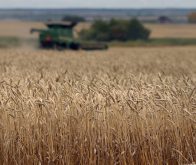Weather issues played a role in determining the price direction of the Canadian and U.S. grain and oilseed markets during the week ended May 24 and it looks like this influence is still in the back of everyone’s mind.
Canola values on the ICE Futures Canada trading platform trended higher in the latest reporting period, with tight supply concerns and the absence of farmer deliveries helping to generate some of the strength. The lack of country movement was a direct reflection of farmers in Western Canada concentrating on getting various crops into the ground. A downswing in the value of the Canadian dollar also added to the friendly price tone in the market.
Read Also

Manitoba sclerotinia picture mixed for 2025
Variations in weather and crop development in this year’s Manitoba canola fields make blanket sclerotinia outlooks hard to pin down
The grain and oilseed industry was especially paying attention to planting progress on the Prairies and at one point was a bit fearful of acreage intentions falling short due to the lateness of spring seeding operations.
Those concerns have certainly eased as farmers have reportedly been making some excellent progress. There were estimates circulating that over 50 per cent of Western Canada’s acreage base has been seeded.
There were some naysayers worried about rain delaying remaining seeding operations, but there were more individuals confident that, given another week of reasonable conditions, Western Canada’s crop will have been put into the ground.
In some regions of the Prairies, farmers who have finished seeding are now hoping for precipitation to alleviate dry conditions. Granted, southern Manitoba and southeastern Saskatchewan remain a bit wetter than necessary and could use some drying out.
Western Canada will need to produce a canola crop no smaller than 15 million tonnes this summer in order to meet the expanded domestic processor demand that has come on board, as well as the exports that have been lined up for the fall period.
As for the milling wheat, durum and barley contracts on the ICE Futures Canada platform, the fact that there is no open interest in any of the contracts might suggest their time is limited. Officials from ICE Futures Canada have not returned requests for comments on the future of these contracts. Privately, traders refuse to trade these contracts, given that there is absolutely no liquidity and adequate substitutes exist at other exchanges.
Soybean futures at the Chicago Board of Trade (CBOT) also experienced some price strength with some of the upward action in the nearby months associated with tight old-crop stocks and strong usage from the export and domestic sectors.
Some support in the deferred months came from reports that farmers in the U.S. had been aggressively planting corn and it wouldn’t be necessary to switch some of the corn acreage to soybeans.
However, the upside in those soybean values was being capped by sentiment that if farmers can catch up to corn plantings in less than one week, getting the soybean crop into the ground will also not be much of a problem. The cheap availability of ample South American soybean supplies on the global market was also tempering any upside price push in values.
Corn values at the CBOT were also up on the week, but the upside was tempered by the U.S. Department of Agriculture’s crop progress report on May 21, which revealed U.S. farmers had made significant progress in planting the crop. Strong export demand combined with fresh speculative demand helped to fuel some of the upside.
The advances were also helped along by the weather outlook, with some forecasters already predicting drought in some areas of the U.S. Corn Belt this summer.
Wheat futures on the CBOT, MGEX and Kansas City Board of Trade experienced some movement to the upside during the week, with concerns about unfavourable weather for spring seeding and development of the U.S. winter wheat crop linked to the advances.
Overall seeding of the U.S. spring wheat crop has been catching up to where it needs to be and few individuals expect the intended area will not be seeded. The day-to-day weather situation keeps changing for the U.S. winter wheat crop. Rains that have hit the region of late have reportedly improved growing conditions. However, on the same token, worries about freezing temperatures also keep popping up.


















